In the contemporary debate on microcredit, the voices of those whose lives it affects on a daily basis are conspicuously absent. The goal of our project is to change that—to bring recipients’ experiences and opinions into the global debates on microcredit.
Building on the Goldin Institute’s work to understand and improve microcredit from the perspective of borrowers, we are happy to share this annotated bibliography of resources with our network. We have compiled a range of resources for people who wish to understand microcredit, featuring analysis of debates going on in the microfinance field by critically examining both the positive and negative impact of the industry.
The Goldin Institute Network Resources
‘Selling Our Own Skin:’ Social dispossession through microcredit in rural Bangladesh
 ‘Selling Our Own Skin:’ Social dispossession through microcredit in rural Bangladesh
‘Selling Our Own Skin:’ Social dispossession through microcredit in rural Bangladesh
Paprocki, Kasia. "‘Selling Our Own Skin:’ Social Dispossession through Microcredit in Rural Bangladesh." Geoforum 74 (2016): 29-38. Web.
In her latest research, Paprocki reflects on recent negative developments in the field that she believes have received insufficient attention in scholarship on agrarian change, both globally and in specific places. She corrects this trend by arguing that microcredit drives social dispossession through three specific mechanisms: the confiscation of assets necessary to social reproduction; the construction of debt relations within a community which reshape what reproduction can look like; and the re-configuration of women’s social status and subjectivities in relation to their communities.

Microfinance: A Guide for Grantmakers
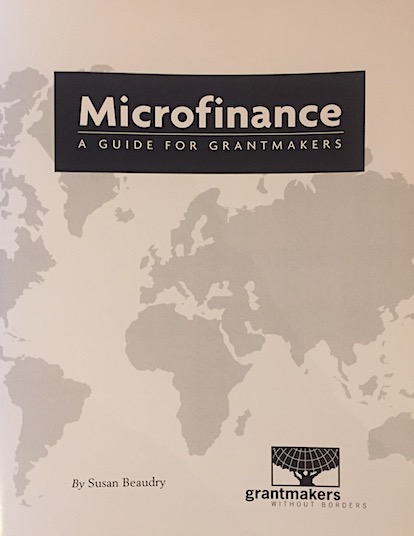 Microfinance: A Guide for Grantmakers
Microfinance: A Guide for Grantmakers
Beaudry, Susan. "Microfinance: A Guide for Grantmakers." Grantmakers Without Borders, the Goldin Institute (2004): n. pag. Web.
This guide was co-authored by Grantmakers Without Borders and the Goldin Institute and contains a series of recommendations for microcredit funders for improving microcredit. The guide offers an overview of the history of microcredit and an analysis of current debates within the field.

Bad press and research put microfinance under new scrutiny
 Bad press and research put microfinance under new scrutiny
Bad press and research put microfinance under new scrutiny
Bad Press and Research Put Microfinance under New Scrutiny. Woldview by WBEZ. Chicago, IL, 17 June 2011. Radio.
Micro credit controversies have once again brought to light the heated debate over the effectiveness of microfinance programs. In July of 2015 the appellate division of the Bangladesh Supreme Court agreed that the nation’s central bank was justified in firing Nobel Peace Prize laureate Muhammad Yunus from his post as managing director of Grameen Bank, the institution he founded more than three decades ago. Travis Rejman, founding executive director of the Goldin Institute, and Susan Beaudry with Grantmakers Without Borders, are co-guest on this episode of WBEZ’s WorldView to discuss the truths and myths of microfinancing.

The Dark Side of Microcredit
 The Dark Side of Microcredit
The Dark Side of Microcredit
Bangladesh: The Dark Side of Microcredit. Woldview by WBEZ. Chicago, IL, 30 November 2009. Radio.
The idea of extending loans to the poorest of the poor generally started in Bangladesh in the mid 70s with a research project by economist Mohammad Yunus. Enthusiasm for microcredit led to Yunus and Grameen winning the Nobel Peace Prize in 2006. But does the reputation match the results? Kasia Paprocki is Research and Program Manager for the Goldin Institute. To explore this question, host Jerome McDonell interviews Kasia Paprocki, Research Director and Khushi Kabir, the Director of Nijera Kori. The interview covers the Goldin Institute's Improving Microcredit: Listening to Recipients project.

Listening to Recipients: Transcript from roundtable discussion
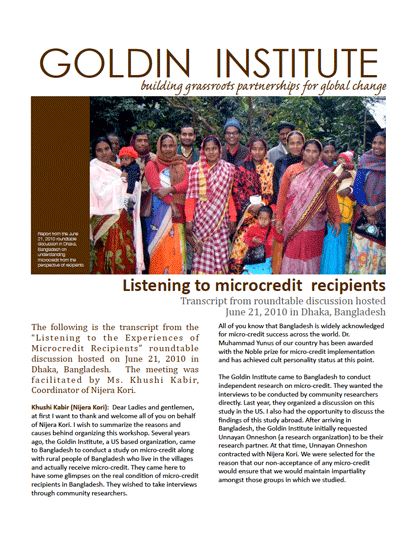 Listening to Recipients: Transcript from roundtable discussion
Listening to Recipients: Transcript from roundtable discussion
Goldin Institute. "Listening to Recipients: Transcript from Roundtable Discussion." Listening to Recipients: Transcript from Roundtable Discussion AIP Conference Proceedings (2010): n. pag. Web.
This resource is a transcript from the "Listening to the Experiences of Microcredit Recipients" roundtable discussion that took place in Dhaka, Bangladesh on June 21, 2010. This groundbreaking summit was the first dialogue between microcredit recipients, lenders and regulators in Bangladesh and is leading to new, more recipient-focused policies at the National Level.

Contested Credit Landscapes: microcredit, self-help and self- determination in rural Bangladesh
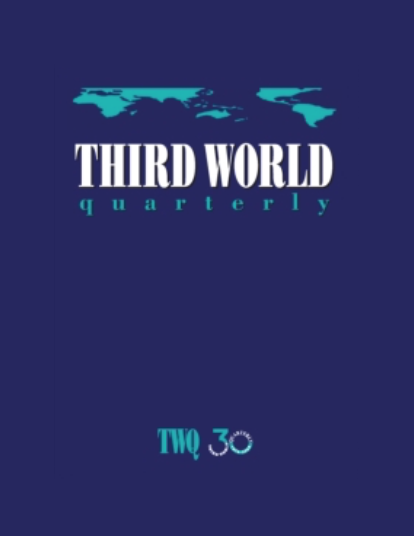 Contested Credit Landscapes: microcredit, self-help and self- determination in rural Bangladesh
Contested Credit Landscapes: microcredit, self-help and self- determination in rural Bangladesh
Cons, Jason, and Kasia Paprocki. "Contested Credit Landscapes: Microcredit, Self-help and Self-determination in Rural Bangladesh." Third World Quarterly 31.4 (2010): 637-54. Web.
This paper makes a methodological and political intervention in debates over microcredit. It explores outcomes of microcredit interventions in the lives of residents of Arampur, a village in rural northern Bangladesh. Using a community-based research and engagement strategy, we explore recipients’ own critiques and experiences of microcredit. These experiences suggest that the cultural and economic template that many microfinance institutions (MFIs) superimpose on communities not only fails to map to lived realities, but often reinforces the very problems that MFIs claim to address.

Why Credit? Concrete Strategies to Address Critical Shortfalls in Microlending Models
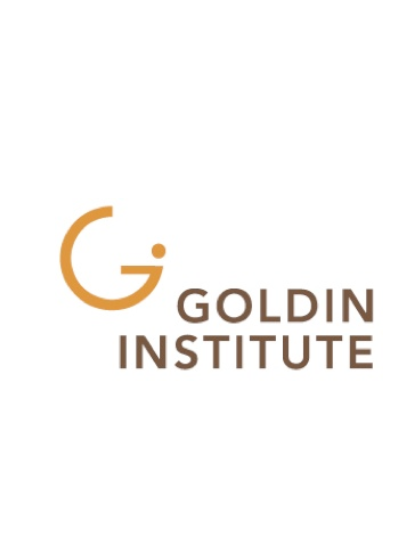 Why Credit? Concrete Strategies to Address Critical Shortfalls in Microlending Models
Why Credit? Concrete Strategies to Address Critical Shortfalls in Microlending Models
Goldin Institute. "Why Credit? Concrete Strategies to Address Critical Shortfalls in Microlending Models." 1 (2009): n. pag. Web.
This concise document serves as an outline that answers the question “Why credit?” and provides readers with real strategies that address some of the most critical shortfalls in the Microlending field. It carefully breaks down the ideas of Microcredit lending, then shares in-depth field research conducted by the Goldin Institute, along with initial findings from that research and five policies recommendations that Microfinancing institutions (MFIs) should adopt.

The Limits of Microcredit— A Bangladesh Case
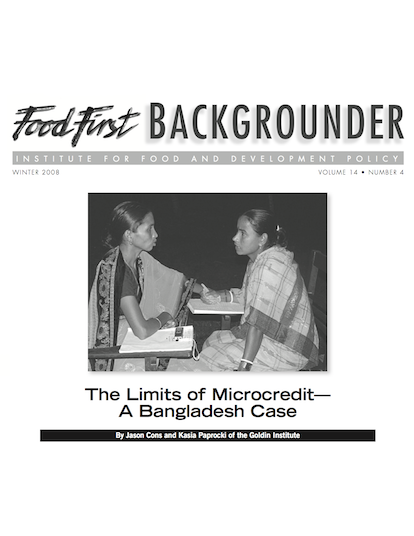 The Limits of Microcredit— A Bangladesh Case
The Limits of Microcredit— A Bangladesh Case
Paprocki, Kasia, and Jason Cons. "The Limits of Microcredit— A Bangladesh Case." Institute for Food and Development Policy 14.4 (2008): 1-4. Web.
This Backgrounder outlines the results of a study on the impact of microcredit on recipient livelihoods in rural Bangladesh. Since its emergence in the 1970s, microcredit has grown in popularity as a tool for development. Today, microcredit organizations have assets well in excess of $22 billion USD and serve more than 113 million clients.1 Microcredit has enormous potential as a tool for poverty alleviation. Yet as this strategy moves into the development mainstream there is an urgent need to reflect on its role in market-led development initiatives and its limitations, as well as its historic successes. There is significant risk in microcredit’s often-uncritical adoption. This risk is compounded by the systematic failure of many microfinance institutions (MFIs) to engage the communities where they work in the process of designing and evaluating microcredit programs. As with many development programs, the voices of communities and individuals who are the supposed beneficiaries of microlending are conspicuously absent from the projects that seek to determine their futures.

Improving Microcredit Programs: Listening to Recipients
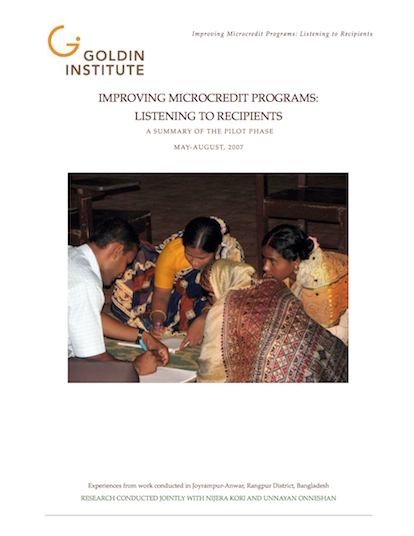 Improving Microcredit Programs: Listening to Recipients
Improving Microcredit Programs: Listening to Recipients
Paprocki, Kasia. "Improving Microcredit Programs: Listening to Recipients." A Summary of the Pilot Phase. Goldin Institute, May 2007. Web.
A Summary of the Goldin Institute’s research conducted in the summer of 2007 to collect and analyze microcredit recipient perspectives using “Community Based Oral Testimony”. This grassroots research was conducted with partner organizations Nijera Kori and Unnayan Onneshan.

Community-Based Oral Testimony: A Different Approach to Knowledge
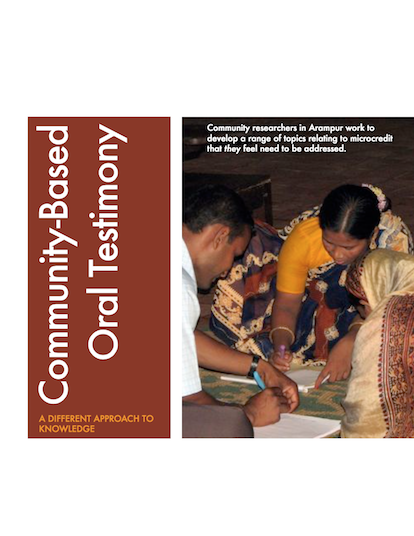 Community-Based Oral Testimony: A Different Approach to Knowledge
Community-Based Oral Testimony: A Different Approach to Knowledge
"Community-Based Oral Testimony: A Different Approach to Knowledge." Goldin Institute, 21 Aug. 2007. Web.
In debates on development, the voices of those it affects are often conspicuously absent. This document gives insight into the Goldin Institute’s strategy for bringing absent voices back: they decided to ask them through a research strategy known as “oral testimony”. This strategy relies on extended semi-structured interviews to let participants tell their own stories in their own words, share their opinions and experiences and convey their own understandings of how development and poverty has transformed the history of their lives and villages. Often oral testimony research is colored by power-dynamics between “researchers” and “subjects”. Within these dynamics, answers to questions are often pre-determined by what each party expects to hear from the other. In this document a new approach is described where microcredit recipients in Arampur, a village in rural Northern Bangladesh, were invited to interview each other about their own experiences with loan.

Microcredit Resources and Research Organizations
This section includes a number of online databases and resource centers with further information on microfinance. Any of the websites in this section would be a good place to start a more in-depth examination of the concepts and debates in the field of microfinance.
The Consultative Group to Assist the Poor (CGAP)
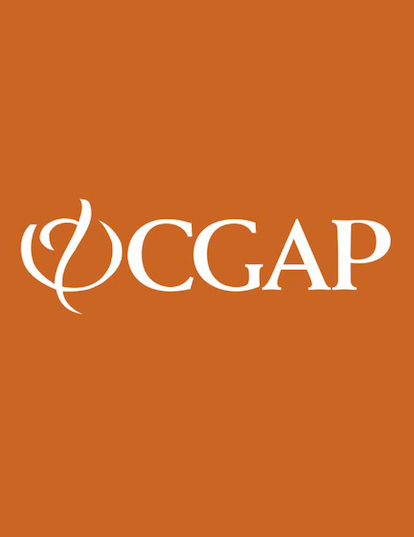 The Consultative Group to Assist the Poor (CGAP)
The Consultative Group to Assist the Poor (CGAP)
http://www.cgap.org
CGAP is a consortium of public and private development agencies, donors, and industry leaders that support microcredit. It aims to serve as a resource center for the microfinance industry. Based at the World Bank offices, CGAP provides a wealth of information on microcredit, strategic priorities for the industry, microcredit agencies, and online resources for researchers.

Microfinance Gateway
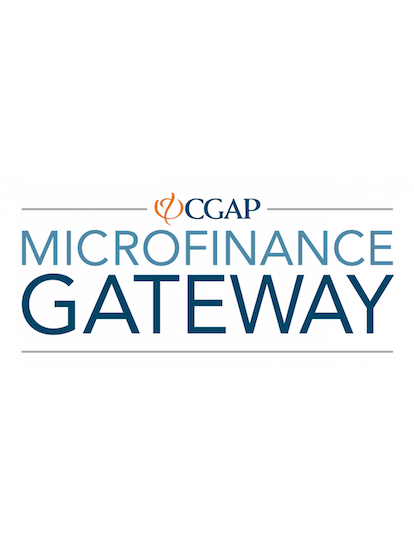 Microfinance Gateway
Microfinance Gateway
http://www.microfinancegateway.org/
This online database is an invaluable toolbox of resources on microcredit, including a remarkably thorough annotated library of publications on all aspects of the microcredit literature. It provides resources for practitioners, policy-makers, and anyone interested in learning more about the field of microfinance.

Poverty Action Lab
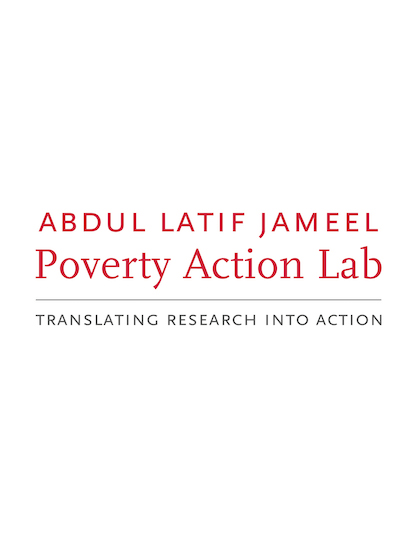 Poverty Action Lab
Poverty Action Lab
https://www.povertyactionlab.org/
The Poverty Action Lab has conducted a range of interesting and important studies on microcredit around the world. Their work is important for its focus on microfinance in general as well as microcredit in particular. Their diverse analysis is rooted in the financial systems approach as well as more critical lenses. This is a good resource to use as an introduction to the range and depth of the academic discourses on microfinance.

Small Fortunes: Micro Credit and the Future of Poverty
 Small Fortunes: Micro Credit and the Future of Poverty
Small Fortunes: Micro Credit and the Future of Poverty
https://www.kqed.org/tv/programs/archive/index.jsp?pgmid=13987
Small Fortunes not only acts as a landing page where one can access its feature film, Small Fortunes, but it acts as a unique resource library as well. On this site you can find detailed borrower profiles, a resource library with links to speeches on Micro Credit, a list of relevant Micro Credit organizations, Micro Credit events and more. This is a good resource for locating visual resources in particular.

Stories and Memoirs
The books listed below narrate the microcredit movement through the stories of many people whose lives have been impacted by microcredit and the practitioners and donors who have made it possible.
Twenty-Seven Dollars and a Dream: How Muhammad Yunus Changed the World and What It Cost Him.
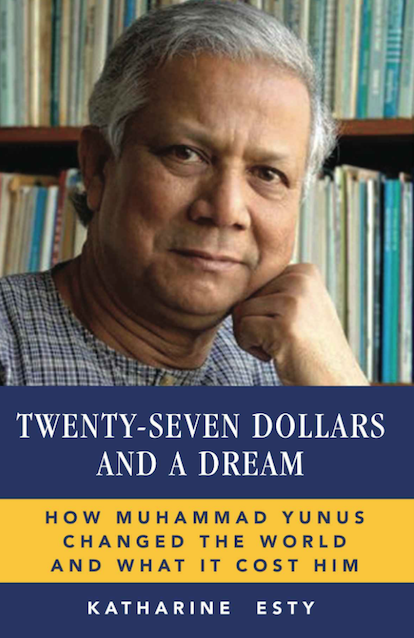 Twenty-Seven Dollars and a Dream: How Muhammad Yunus Changed the World and What It Cost Him.
Twenty-Seven Dollars and a Dream: How Muhammad Yunus Changed the World and What It Cost Him.
Katharine Esty Henley, Patricia. The Hummingbird House. MacMurray, 1999.
This book is the memoir of Muhammad Yunus – also known as the most famous microcredit practitioner in the world, although he is also an economist, the founder of Bangladesh’s Grameen Bank, and the winner of the 2006 Noble Peace Prize. The book describes in great detail how Yunus developed the concept of Micro Credit for the Grameen Bank. It also highlights key stories of the people he met along his journey.

Confessions of a Microfinance Heretic: How Microlending Lost Its Way and Betrayed the Poor
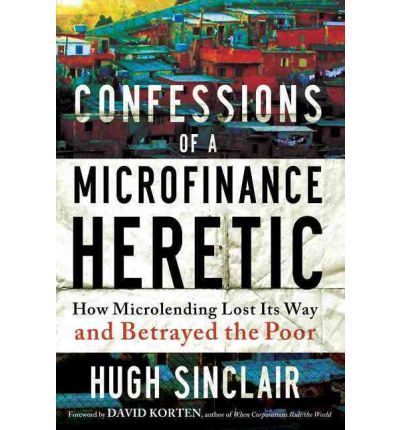 Confessions of a Microfinance Heretic: How Microlending Lost Its Way and Betrayed the Poor
Confessions of a Microfinance Heretic: How Microlending Lost Its Way and Betrayed the Poor
Sinclair, Hugh. "Confessions of a Microfinance Heretic: How Microlending Lost Its Way and Betrayed the Poor." Berrett-Koehler Publishers, 1 June 2012. Web. 25 Sept. 2016.
Author Hugh Sinclair has worked with several different microfinance institutions around the world. Through this work couldn’t help but notice that even with a booming $70 billion industry on their side, the poor didn’t seem any better off. In this book Sinclair details his discovery of several scandals and how the field reacted. Sinclair’s objections were first met with silence, then threats, attempted bribery, and a court case, and eventually led him to become a principal whistleblower in a sector. Sinclair does also describes moving experiences with several ethical and effective organizations and explains what made them different and successful. However, he states that without the fundamental reforms recommended here, microfinance will remain an “investment opportunity” that will leave the poor with hollow promises and empty pockets.

Banker to the Poor: Micro-Lending & the Battle against World Poverty
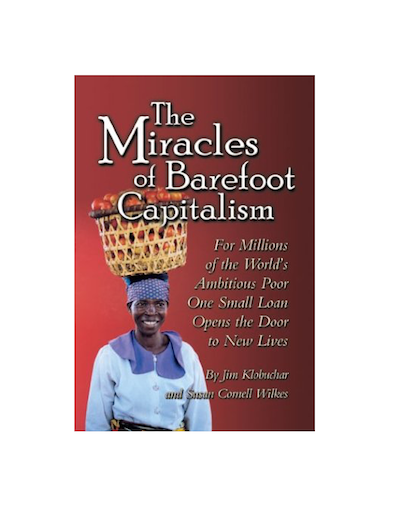 Banker to the Poor: Micro-Lending & the Battle against World Poverty
Banker to the Poor: Micro-Lending & the Battle against World Poverty
Yunus, Muhammad, and Alan Jolis. Banker to the Poor: Micro-lending and the Battle against World Poverty. N.p.: PublicAffairs, 2008. Print.
This is the memoir of Muhammad Yunus, economist, founder of Bangladesh’s Grameen Bank, winner of the 2006 Noble Peace Prize, and the most famous microcredit practitioner in the world. The book details how Yunus developed the concept for the Grameen Bank and the stories of the people he met along the way. Banker to the Poor, which is consistently described as “inspirational,” is very straightforward and readable. It serves as a good introduction to the concept of microcredit. The book describes Yunus’ childhood as well as his years in college in America, and then details his growing awareness of the economic need for microcredit back in Bangladesh, and the development of the system of lending to the poor, starting with a $27 loan out of his own pocket.

The Miracles of Barefoot Capitalism: A Compelling Case for Microcredit.
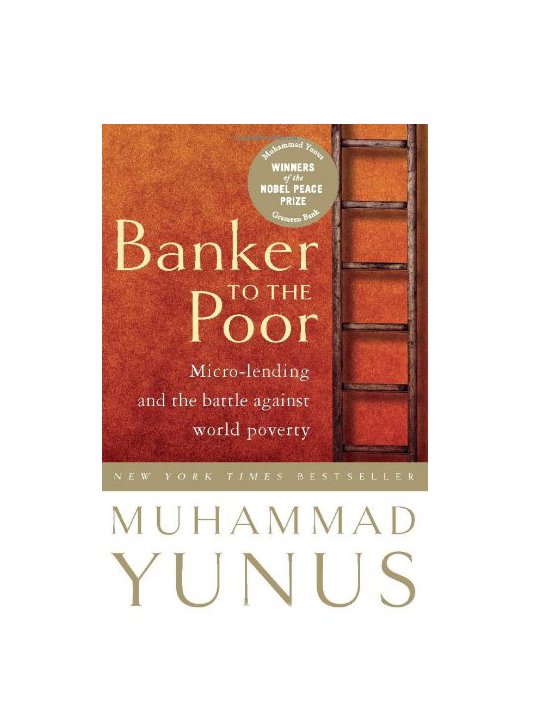 The Miracles of Barefoot Capitalism: A Compelling Case for Microcredit.
The Miracles of Barefoot Capitalism: A Compelling Case for Microcredit.
Klobuchar, Jim, and Susan Cornell Wilkes. The Miracles of Barefoot Capitalism: A Compelling Case for Microcredit. Minneapolis, MN: Kirk House, 2003. Print.
This short book serves as an introduction to microcredit through the stories of small business owners who have benefited from microcredit loans as well as the stories of individuals who have contributed to microcredit programs. Klobuchar and Wilkes have travelled throughout the world visiting microcredit programs and recipients, and have brought together here the stories of many of the people they have encountered.

Key Debates in Microfinance
This section provides a general overview of some of the key debates in the microfinance field, focusing on some of the more critical assessments of the progress of the movement.
The Crises of Microcredit
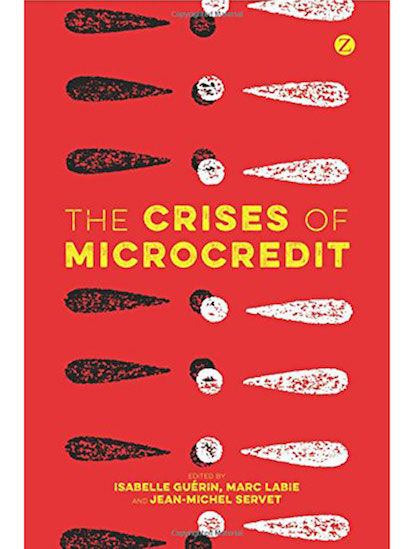 The Crises of Microcredit
The Crises of Microcredit
Guérin, Isabelle, Marc Labie, and Jean-Michel Servet. The Crises of Microcredit. N.p.: Zed, 2015. Print.
With the rise of Microcredit related crises in countries all of the world, this book begs the question, “Is this the end of microcredit or rather an essential step in its expansion?”. By drawing on extensive empirical research conducted in various parts of the world this important volume examines the whole chain of microcredit to provide the answers to these big questions on the future of Microcredit and poverty alleviation efforts.

Narratives of risk and poor rural women’s (dis)-engagements with microcredit-based development in Eastern India. Majumder, Sarasij
 Narratives of risk and poor rural women’s (dis)-engagements with microcredit-based development in Eastern India. Majumder, Sarasij
Narratives of risk and poor rural women’s (dis)-engagements with microcredit-based development in Eastern India. Majumder, Sarasij
Sen, D., and S. Majumder. "Narratives of Risk and Poor Rural Women's (dis)-engagements with Microcredit-based Development in Eastern India." Critique of Anthropology 35.2 (2015): 121-41. Web.
With Microcredit coming under severe academic criticism in recent years, the diversity of local practices and discourses that respond to and critique microcredit are still being under-examined. This article emphasizes the counter-hegemonic aspects of local engagements with microcredit by exploring emergent entrepreneurial practices and strategic loan avoidance in the city of Darjeeling, India.

Estimating the Long-Run Impact of Microcredit Programs on Household Income and Net Worth
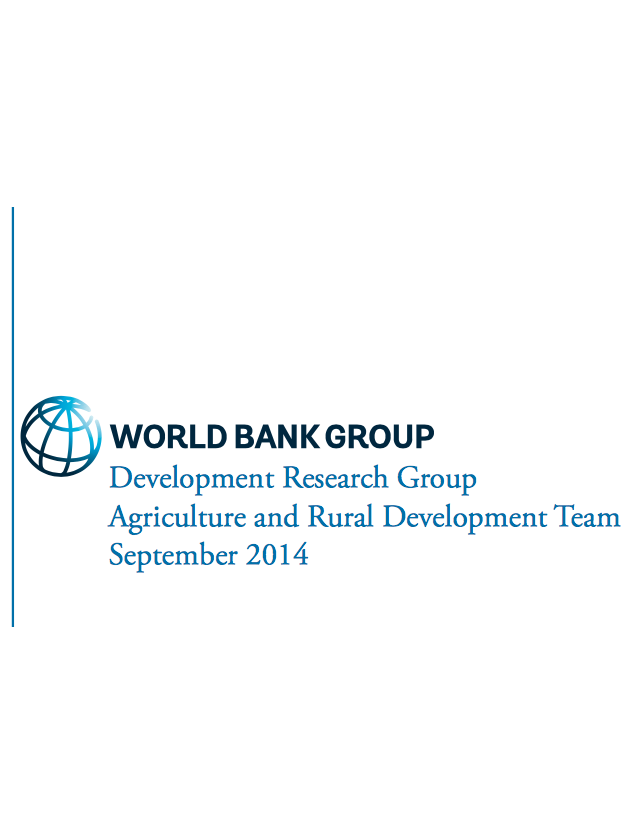 Estimating the Long-Run Impact of Microcredit Programs on Household Income and Net Worth
Estimating the Long-Run Impact of Microcredit Programs on Household Income and Net Worth
Woutersen, Tiemen, and Shahidur R. Khandker. "Estimating the Long-Run Impact of Microcredit Programs on Household Income and Net Worth." Policy Research Working Papers (2014): n. pag. Web.
This paper investigates whether the utilization of microcredit programs has a significant impact on the income and net worth of the participants. By utilizing more than 20 years of panel data on households in Bangladesh, this research estimates the bounds on the causal effects of microcredit programs. Notably, the analysis rejects the hypothesis that these microcredit programs are a poverty trap. Moreover, the paper finds moderately positive effects of such programs.

Time to Take the Credit
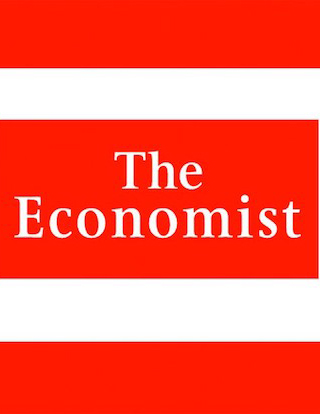 Time to Take the Credit
Time to Take the Credit
"Time to Take the Credit." The Economist. The Economist Newspaper, 2007. Web.
This article explains the ways in which many major microfinance institutions cater to a small group of the most creditworthy (and less poor) borrowers. The article also describes the two different kinds of donors who are funding microfinance: philanthropists like Bill Gates and Pierre Omidyar (founder of eBay), two of the most prominent donors in the microfinance field, as well as profit-seeking lenders, such as many commercial banks which have entered the field of microfinance with a profit motive. The article argues that by subsidizing microfinance organizations that are already proven to be profitable, donors are not only restricting their potential target population, but they are also harming the commercially profitable microfinance market.

The Poor Always Pay Back: The Grameen II Story
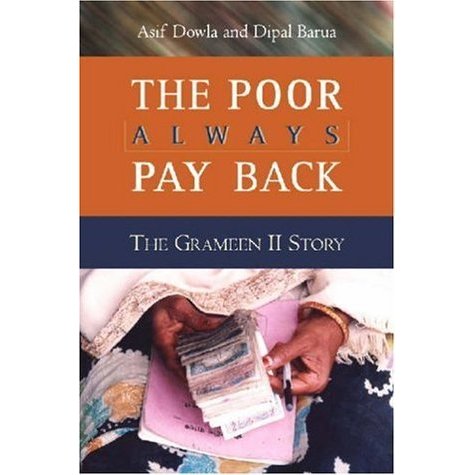 The Poor Always Pay Back: The Grameen II Story
The Poor Always Pay Back: The Grameen II Story
Dowla, Asif, and Dipal Barua. "The Poor Always Pay Back: The Grameen II Story Paperback – November 14, 2006." The Poor Always Pay Back: The Grameen II Story: Asif Dowla, Dipal Barua: 9781565492318: Amazon.com: Books. Kumarian Press, 14 Nov. 2006. Web. 25 Sept. 2016.
The is the story of Nobel Prize-winning microcredit institution “Grameen Bank” and it’s recent, complete overhaul of its standard system, effectively creating "Grameen II". This text describes the reasoning behind the transformation as an effort to make its loan programs more effective. Grameen Bank II is, overall, attempting to address the most pressing issues in microfinance which include; open access savings, flexible loan products, self reliance and absence of donor dependency for funds, etc. This story paints a behind-the-scenes picture of how these institutional changes support and further Grameen’s mission for social justice.

“Hype and Hope: The Worrisome State of the Microcredit Movement” The Microfinance Gateway
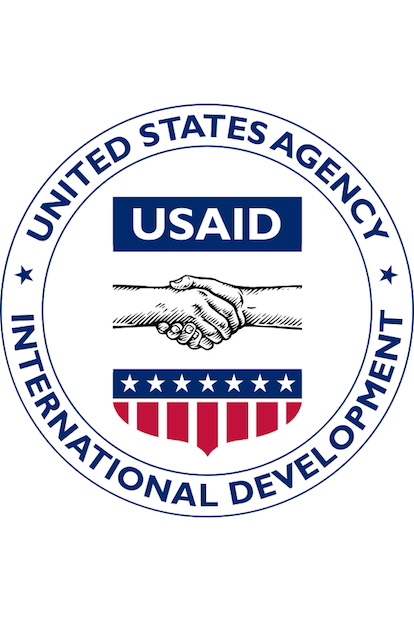 “Hype and Hope: The Worrisome State of the Microcredit Movement” The Microfinance Gateway
“Hype and Hope: The Worrisome State of the Microcredit Movement” The Microfinance Gateway
Letcher, Thomas, comp. "Hype and Hope: The Worrisome State of the Microcredit Movement." (n.d.): n. pag. USAID. United States Agency for International Development, 25 May 2006. Web.
In this critical but important piece on the microfinance movement, veteran International Development Practitioner and Analyst Thomas Dichter provides a reasoned evaluation of the microcredit movement and the growing media attention it continues to generate. The article provides an extremely thorough contextualization of the microcredit movement, giving a detailed history of the movement’s development and its location within the broader field of Development. Finally, he discusses his own experience with microcredit research, citing the stories of individuals he has encountered, and explaining that the majority of literature available does not match the reality on the ground.

Blaming the Poor and Legitimizing Coercive Loan Recovery Strategies: Unveiling the Dark Side of NGO Practices in Bangladesh
 Blaming the Poor and Legitimizing Coercive Loan Recovery Strategies: Unveiling the Dark Side of NGO Practices in Bangladesh
Blaming the Poor and Legitimizing Coercive Loan Recovery Strategies: Unveiling the Dark Side of NGO Practices in Bangladesh
Ali, H M Ashraf. "Blaming the Poor and Legitimizing Coercive Loan Recovery Strategies: Unveiling the Dark Side of NGO Practices in Bangladesh." Anthropologica 56.1 (2014): 177-91. Muse. Web.
In this text Ashraf Ali utilizes ethnographic research and data to examine the contradictions prevailing between the claims of microfinance institutions’ achievement and how these institutions define the causes of poverty in relation to poor people’s ability to repay the loans. Further, he describes how loan officers exploit the provision of group liability to implement microcredit programs and create an unequal development opportunity while legitimizing the coercive actions of repayment enforcement by blaming the poor.

Microcredit and power: examining how and why women encounter domination in Bangladesh
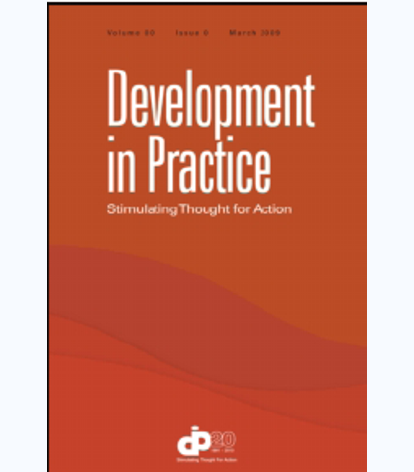 Microcredit and power: examining how and why women encounter domination in Bangladesh
Microcredit and power: examining how and why women encounter domination in Bangladesh
Ali, H.m. Ashraf. "Microcredit and Power: Examining How and Why Women Encounter Domination in Bangladesh." Development in Practice 24.3 (2014): 327-38. Web.
A Summary of the Goldin Institute’s research conducted in the summer of 2007 to collect and analyze microcredit recipient perspectives using “Community Based Oral Testimony”. This grassroots research was conducted with partner organizations Nijera Kori and Unnayan Onneshan.

Making Microfinance More Effective
 Making Microfinance More Effective
Making Microfinance More Effective
by Dean Karlan, Rebecca Mann, Jake Kendall, Rohini Pande, Tavneet Suri, and Jonathan Zinman
This article summarizes the work of Dean Karlan and his team as they reflect on on a literature review of rigorous academic studies of financial service innovations for the very poor. Researchers have found that to date, microcredit has not lived up to expectations but delivery innovations and technology may be able to improve its efficacy.

Financial Systems Approach
The books and article below all present the analysis of a Financial Systems Approach to microfinance. This is one approach to microfinance delivery which emphasizes financial services to the poor through a traditional commercial banking model and the development of independently sustainable financial institutions. This method views microfinancial services as a commercial market providing services which clients want at a cost to the client that covers the costs to the institution of delivery. The key element of this model within the context of the broader field of microfinance is that the ultimate objective of the Financial Systems Approach is the financial viability of the lending institution itself, as opposed to the objective being poverty alleviation. Advocates of the Financial Systems approach argue that by prioritizing institutional viability, these programs will be able to have a broader poverty alleviation impact.
The New Microfinance Handbook: A Financial Market System Perspective.Ledgerwood, Joanna.
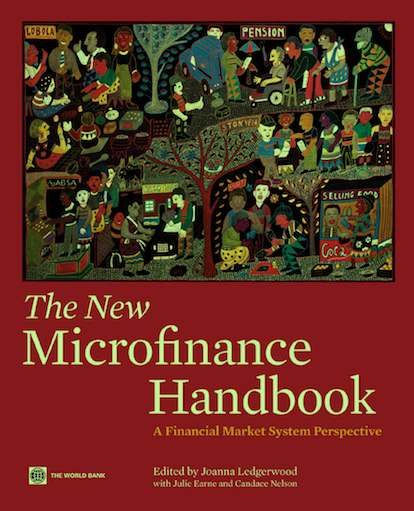 The New Microfinance Handbook: A Financial Market System Perspective.Ledgerwood, Joanna.
The New Microfinance Handbook: A Financial Market System Perspective.Ledgerwood, Joanna.
Ledgerwood, Joanna, Julie Earne, and Candace Nelson. The New Microfinance Handbook: A Fiinancial Market System Serspective. Washington, DC: World Bank, 2013. Print.
The New Microfinance Handbook takes a market systems approach to financial inclusion which is oriented by client needs, rather than board or stock holder needs. Microfinance clients take center stage in this text with the core idea that financial needs of the poor are many and are provided by multiple market players, outside the scope of any one institutional. The book expands on its analysis of this core through examination of client needs (demand), products and providers (supply), and the support systems required to increase financial access to the poor. Ultimately the goal of The New Microfinance Handbook is to give readers a strategic guide in assessing the financial service needs of the poor and to establish how a healthy and diversified financial sector can address these very needs.

Beyond Microfinance: Building Inclusive Rural Financial Markets in Central Asia
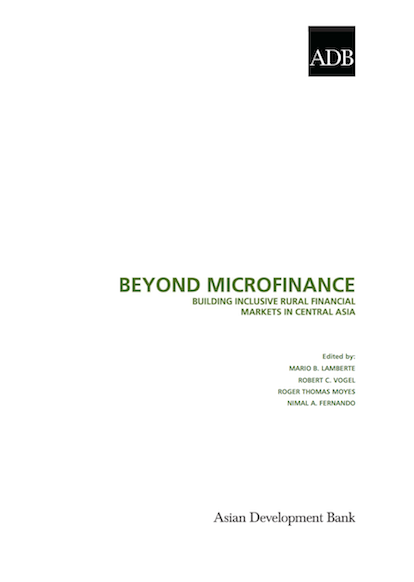 Beyond Microfinance: Building Inclusive Rural Financial Markets in Central Asia
Beyond Microfinance: Building Inclusive Rural Financial Markets in Central Asia
Lamberte, Mario B. Beyond Microfinance: Building Inclusive Rural Financial Markets in Central Asia. Mandaluyong City, Metro Manila, Philippines: Asian Development Bank, 2006. Print.
With a focus on rural financial markets in Central Asia, this texts almost immediately highlights a paradox observable in rural Asia: while poverty in Asia retains a significantly rural dimension, economic opportunities abound throughout rural areas of Asia simultaneously. The texts argues that robust, and inclusive financial markets will help people take advantage of economic opportunities and will thus help people living in rural areas improve their welfare. Importantly, the author presents findings from a recent research into the current status of rural financial systems in six Central Asian republics: Azerbaijan, Kazakhstan, Kyrgyz Republic, Mongolia, Tajikistan and Uzbekistan – all of which are often left out of global microcredit conversations. Essentially this text is asking, "What can be done to more effectively develop robust inclusive rural financial markets?”

“The Hidden Wealth of the Poor”
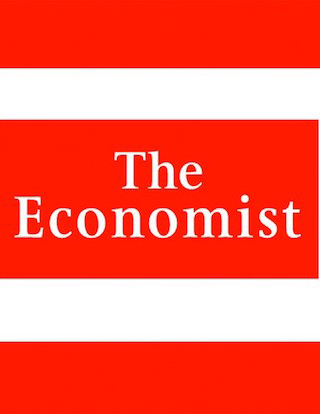 “The Hidden Wealth of the Poor”
“The Hidden Wealth of the Poor”
Easton, Tom. The Hidden Wealth of the Poor. London: Economist Newspaper, 2005. Print.
PThis brief article provides an introduction to microfinance from the perspective of the financial systems approach. The author describes the inadequate provision of financial services to the poor, and the strides being made by a growing sector of microfinance agencies to provide these services, which were previously reserved for the wealthy.

Robinson, Marguerite S. The Microfinance Revolution: Sustainable Finance for the Poor
 Robinson, Marguerite S. The Microfinance Revolution: Sustainable Finance for the Poor
Robinson, Marguerite S. The Microfinance Revolution: Sustainable Finance for the Poor
Robinson, Marguerite S. "The Microfinance Revolution." (2001): n. pag. The World Bank. Web.
The World Bank’s seminal piece on microfinance, this is the first volume of three written by Marguerite Robinson, all dealing with important issues and case studies in the microfinance field. The book is remarkable for its scope as well as the depth of its bold analysis. It provides a detailed overview of the history and trajectory of the microfinance sector, focusing on the development of the diversity of financial services beyond credit, particularly savings. It offers case studies of the experience of microfinance in 17 different countries, including a rare critique of Bangladesh’s Grameen Bank model. Throughout, Robinson focuses on the growing shift from subsidized credit systems which focus on poverty alleviation as their primary objective to self-sufficient microfinance institutions which are commercially profitable. This is at times a controversial analysis, as she makes the argument that microcredit should not be afforded to the poorest of the poor (instead focusing on the group she calls the “economically active poor”), and it is not a human right. However, it is an important work for the microfinance field and is helpful in understanding the breadth of debates in the global microfinance discourse.

Mainstreaming Microfinance: How Lending to the Poor Began, Grew, and Came of Age in Bolivia
 Mainstreaming Microfinance: How Lending to the Poor Began, Grew, and Came of Age in Bolivia
Mainstreaming Microfinance: How Lending to the Poor Began, Grew, and Came of Age in Bolivia
Rhyne, Elisabeth H. Mainstreaming Microfinance: How Lending to the Poor Began, Grew, and Came of Age in Bolivia. Bloomfield: Kumarian, 2001. Print.
Though much lesser known, the development of microfinance in Bolivia charted a similar path as in Bangladesh, as it quickly became a booming industry and brought a massive segment of the country’s population into the mainstream financial market in just a decade. The Bolivian microfinance experience became a model for the development of the international microfinance industry. Elisabeth Rhyne is one of the leading and most prolific proponents of the financial systems approach to microfinance, which advocates the incorporation of microfinance into commercial financial markets. In Mainstreaming Microfinance, Rhyne examines the development of microfinance under commercialization and competition between firms, and the transformation of credit-providing NGOs into formal financial institutions. This book is an important resource for understanding a key tension in the world of microfinance, between a move towards commercialization of services and a more traditional not-for-profit approach which prioritizes poverty-alleviation objectives.

Fighting Poverty with Microcredit: Experience in Bangladesh
 Fighting Poverty with Microcredit: Experience in Bangladesh
Fighting Poverty with Microcredit: Experience in Bangladesh
Khandker, Shahidur R. Fighting Poverty with Microcredit: Experience in Bangladesh. New York: Oxford UP, 1998. Print.
This book published by the World Bank by a leading writer on the experience of the Grameen Bank and microfinance in Bangladesh evaluates the cost effectiveness and gender implications of three Bangladesh microcredit programs, comparing them to other antipoverty programs. The author discuses issues of accountability for both practitioners and borrowers and explains that microfinance can only be sustainable with an emphasis on accountability and the development of a system for determining credit-worthiness of potential borrowers. Khandaker argues for increased emphasis on savings mobilizations and that microfinance institutions should be allowed to set interest rates that reflect market forces, in order to create conditions conducive to sustainable microfinance institutions.

Dynamics in the Field
An extremely important field of inquiry, and one which is gaining more attention in the field of microfinance research, these articles explore specific relationships between borrowers and lenders at the village level, and how the dynamics of these relationships play out on the ground. A study of these relationships and dynamics yields extremely interesting information about microcredit programs, and provides an important dimension to evaluations and analyses of microcredit programs.
The Micro-politics of Microcredit: Gender and Neoliberal Development in Bangladesh (ASAA Women in Asia Series)
 The Micro-politics of Microcredit: Gender and Neoliberal Development in Bangladesh (ASAA Women in Asia Series)
The Micro-politics of Microcredit: Gender and Neoliberal Development in Bangladesh (ASAA Women in Asia Series)
Uddin, Mohammed Jashim. The Micro-politics of Microcredit: Gender and Neoliberal Development in Bangladesh. N.p.: Routledge, 2015. Print.
This book is based on widespread, in-depth original research that explores how microcredit works when put into daily practice and then assesses the effectiveness of said practices. In addition to research and discussion, this texts uses a critical lens to discusses how microcredit is often passed to the men of the family via female borrowers. The authors critical lens extends to analysis of how microcredit rules are regularly perceived as exasperating by the borrowers, how borrowers often end up downward spiraling into debt, how lenders often charge high rates of interest while working primarily to preserve their institutions, and therefore, go against the spirit of the microcredit movement. As a whole, the author argues that while microcredit does a lot of good, it also has many drawbacks, which must be monitored.

Distant voices: the view of the field workers of NGOs in Bangladesh on microcredit
 Distant voices: the view of the field workers of NGOs in Bangladesh on microcredit
Distant voices: the view of the field workers of NGOs in Bangladesh on microcredit
Ahmad, Mokbul Morshed. "Distant Voices: The Views of the Field Workers of NGOs in Bangladesh on Microcredit." The Geographical Journal 169.1 (2003): 65-74. Web.
Ahmad’s analysis privileges the experience of the NGO field worker as the primary mode of understanding the relationship between microcredit NGOs and their clients. This analysis provides a better understanding of the motivations behind many of the major problems with microcredit provisions, such as the exclusion of the poorest. The findings are situated in a broader analysis of NGO policy and microcredit program design. Insight into this relationship facilitates a better comprehension of the needs of microcredit recipients and to what extent microcredit is (or is not) fulfilling them.

Beyond Microcredit: Putting Development Back into Microfinance
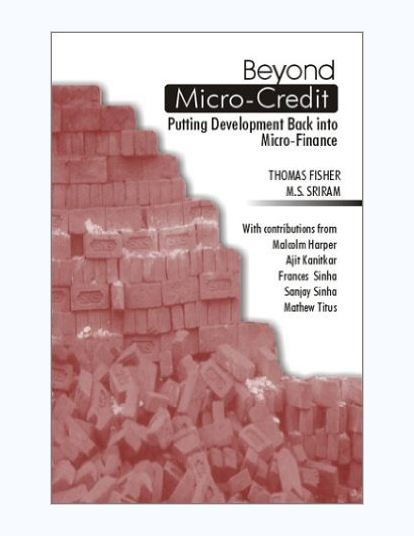 Beyond Microcredit: Putting Development Back into Microfinance
Beyond Microcredit: Putting Development Back into Microfinance
Sriram, M. S. Beyond Microcredit: Putting Development Back into Microfinance. N.p.: Oxfam, 2001. Print.
This book takes on the challenge of refocusing the conversation around Micro-finance from, what the author refers to as, the dominant focus on the technology and management of micro-finance, to being discussed as a fundamental instrument for development which he claims are too often lost. This book pushes at the microfinance edges of the microfinance community to examine the assortment of development goals for which microfinance can be used; including poverty alleviation through providing savings, credit, and insurance, promoting livelihoods, empowering women, building people's organizations, and changing institutions. The book provides the most comprehensive analysis publicly available of the topic of Indian practices in microfinance and takes pains to compare them closely with microfinance in Bangladesh.

“Micro-credit Initiatives for Equitable and Sustainable Development: Who Pays?”
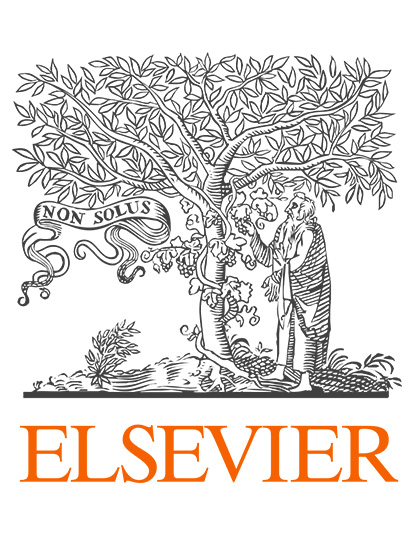 “Micro-credit Initiatives for Equitable and Sustainable Development: Who Pays?”
“Micro-credit Initiatives for Equitable and Sustainable Development: Who Pays?”
Rahman, Aminur. "Micro-credit Initiatives for Equitable and Sustainable Development: Who Pays?" World Development 27.1 (1999): 67-82. Web.
In this article which explores the impacts of Grameen Bank lending in rural Bangladesh, Rahman looks at the costs and benefits of microfinance. In the process, he discovers a great deal of information about Grameen Bank field workers and the dynamics of their relationships with borrowers. He finds that these dynamics often create a great deal of pressure on female clients, increase tensions in the household and create cycles of debate from which borrowers have a hard time escaping.

“Microenterprise Finance: Is There a Conflict Between Growth and Poverty Alleviation?”
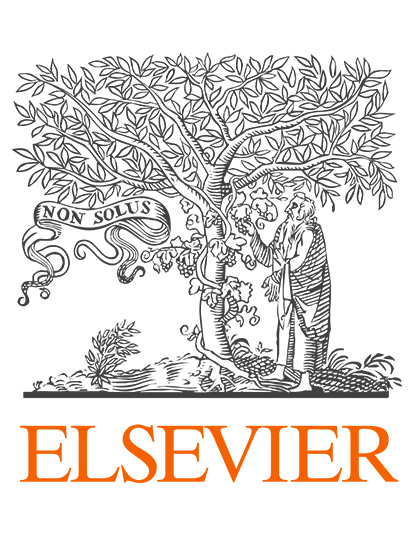 “Microenterprise Finance: Is There a Conflict Between Growth and Poverty Alleviation?”
“Microenterprise Finance: Is There a Conflict Between Growth and Poverty Alleviation?”
Mosley, Paul, and David Hulme. "Microenterprise Finance: Is There a Conflict between Growth and Poverty Alleviation?" World Development 26.5 (1998): 783-90. Web.
This book published by the World Bank by a leading writer on the experience of the Grameen Bank and microfinance in Bangladesh evaluates the cost effectiveness and gender implications of three Bangladesh microcredit programs, comparing them to other antipoverty programs. The author discuses issues of accountability for both practitioners and borrowers and explains that microfinance can only be sustainable with an emphasis on accountability and the development of a system for determining credit-worthiness of potential borrowers. Khandaker argues for increased emphasis on savings mobilizations and that microfinance institutions should be allowed to set interest rates that reflect market forces, in order to create conditions conducive to sustainable microfinance institutions.

“Nongovernmental Organizations, Micro-Credit, and the Empowerment of Women”
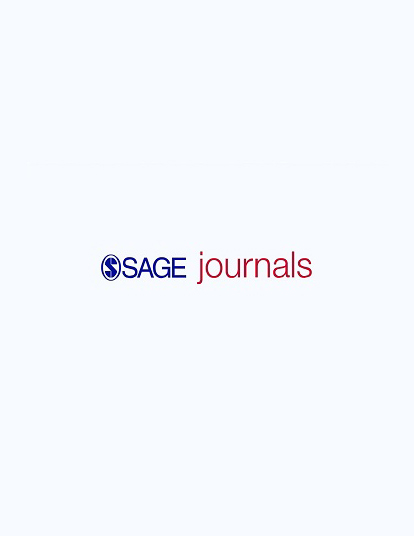 “Nongovernmental Organizations, Micro-Credit, and the Empowerment of Women”
“Nongovernmental Organizations, Micro-Credit, and the Empowerment of Women”
Fernando, J. L. "Nongovernmental Organizations, Micro-Credit, and Empowerment of Women." The ANNALS of the American Academy of Political and Social Science 554.1 (1997): 150-77. Web.
The first part of the article appraises the rise of microcredit programs in Bangladesh within a broader historical context. It shows how women’s interests are being subsumed by and subordinated to the priorities of mainstream development in ways detrimental to the radical aspirations of the NGOs’ empowerment project. The second part is a critical evaluation of the current approaches used in studies on micro-credit and empowerment. The third part, based on field research in Bangladesh, demonstrates that the widely documented successes of micro-enterprises are a result of the activities of the very institutions that are considered to be oppressive to women. A scathing but insightful critique of the microfinance industry.

Gender and Empowerment
A primary concern of microfinance evaluations and dialogues, the following articles deal with the issue of women’s empowerment, and the gender dynamics which contribute to it. While there is certainly no consensus among microfinance researchers about the empowerment potential of microfinance programs, a study of the microfinance and empowerment literature provides a crucial insight into some of the most important issues in the microfinance debate.
Gender and rural microfinance: Reaching and empowering women Mayoux, L., Harl, M.
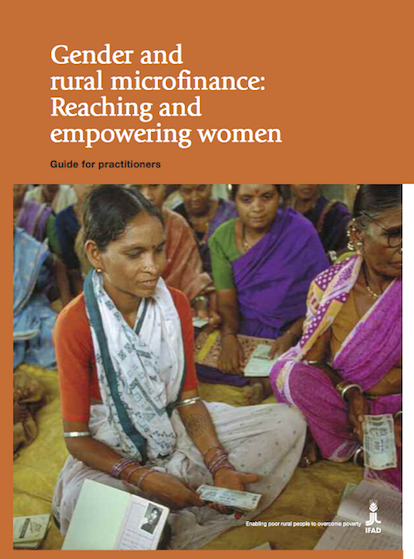 Gender and rural microfinance: Reaching and empowering women Mayoux, L., Harl, M.
Gender and rural microfinance: Reaching and empowering women Mayoux, L., Harl, M.
Mayoux, Linda. "Reaching and Empowering Women: Towards a Gender Justice Protocol for a Diversified, Inclusive, and Sustainable Financial Sector." Perspectives on Global Development and Technology 9.3-4 (2010): 581-600. Web.
This handy study guide is intended to be used an overview of the gender issues that effect rural finance practitioners. It not only attempts to emphasize important questions about empowerment, gender and gender mainstreaming, but it attempts to be useful to experts who wish to gain a greater understanding of specific gender issues related to rural finance in particular. While this guide is intended for immediate use among IFAD’s on-the-ground programme managers and staff, it is also designed to be assessable to the public, i.e. microfinance institutions, gender practitioners working in rural microfinance, students, and academic.

The Economics of Transition: Microfinance Beyond Group Lending
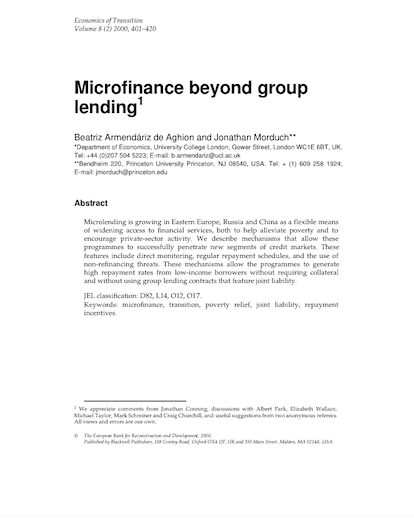 The Economics of Transition: Microfinance Beyond Group Lending
The Economics of Transition: Microfinance Beyond Group Lending
Aghion, Beatriz Armendariz De, and Jonathan Morduch. "Microfinance Beyond Group Lending." The Economics of Transition Economics of Transition 8.2 (2005): 401-20. Web.
Chapter seven of this text, titled “Gender” takes an in-depth look into the relationship between microfinance and gender. In the global community, microfinance is often seen as being all about banking for women. This is in large part due to the efforts of microcredit pioneers, like BancoSol and the Grameen Bank, who were built with the ideals of serving women. While this texts sites a recent study which found that women make up 80 percent of the clients of the thirty-four largest microlenders, not all microfinance institutions focus specifically on women. This chapter attempts to address gender issues in microcredit directly through questions like; Why are most microfinance borrowers women, especially the most impoverished? Is targeting women efficient in the strict economic sense? Does it favor more equality within the household? How might microfinance help to promote social capital and women’s empowerment? Etc.

“Is Microfinance a ‘Magic Bullet’ for Women’s Empowerment? Analysis of Findings from South Asia
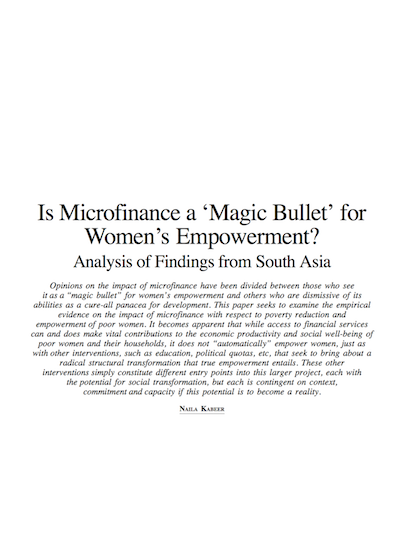 “Is Microfinance a ‘Magic Bullet’ for Women’s Empowerment? Analysis of Findings from South Asia
“Is Microfinance a ‘Magic Bullet’ for Women’s Empowerment? Analysis of Findings from South Asia
Kabeer, Naila. "Is Microfinance a 'Magic Bullet' for Women's Empowerment? Analysis of Findings from South Asia." Economic and Political Weekly (2005): n. pag. Www.jstor.org. Web.
In this article, Naila Kabeer, tackles the question that has everyone in the microfinance industry talking: is microcredit a panacea for development, poverty reduction, and women’s empowerment? Kabeer answers this question with a reasoned but firm “no,” citing a need for radical structural transformation if true empowerment is to be achieved. Kabeer explains that, like many other development strategies, while microcredit has great potential for providing necessary financial services to the poor, it does not automatically empower women. She concludes by explaining that currently microfinance programs are most effective when they are provided in tandem with other interventions, specifically targeting social empowerment.

“Tackling the Down Side: Social Capital, Women’s Empowerment and Micro-Finance in Cameroon”
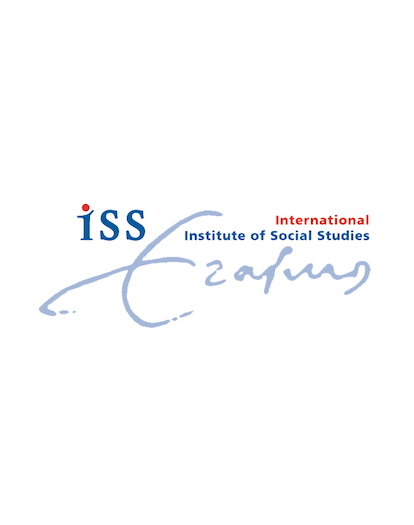 “Tackling the Down Side: Social Capital, Women’s Empowerment and Micro-Finance in Cameroon”
“Tackling the Down Side: Social Capital, Women’s Empowerment and Micro-Finance in Cameroon”
Mayoux, Linda. "Tackling the Down Side: Social Capital, Women's Empowerment and Micro-Finance in Cameroon." Development and Change Development & Change 32.3 (2001): 435-64.Http://onlinelibrary.wiley.com/. Web.
This article examines the experience of seven microfinance programs in Cameroon including case studies of a number of their clients. It critiques the assumptions made by many microcredit evaluations of automatic empowerment potential of microcredit group formation without a more thorough examination of the complexities of intra-community networking and local power dynamics. Mayoux explains that a reliance on group formation in order to reduce program costs may in fact undermine goals of empowerment, sustainability, and poverty reduction. This discussion lays the groundwork for a thorough critique of an approach to microcredit which focuses on the sustainability of microfinance institutions above the sustainability of the businesses they seek to foster.

“Conflicts Over Credit: Re-Evaluating the Empowerment Potential of Loans to Women in Rural Bangladesh,” Kabeer, Naila
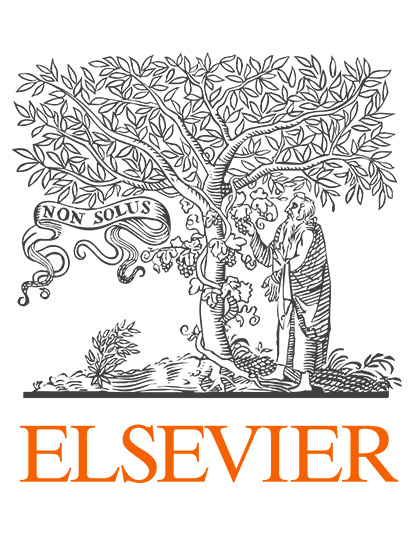 “Conflicts Over Credit: Re-Evaluating the Empowerment Potential of Loans to Women in Rural Bangladesh,” Kabeer, Naila
“Conflicts Over Credit: Re-Evaluating the Empowerment Potential of Loans to Women in Rural Bangladesh,” Kabeer, Naila
Kabeer, Naila. "Conflicts Over Credit: Re-Evaluating the Empowerment Potential of Loans to Women in Rural Bangladesh." World Development 29.1 (2001): 63-84. Sciencedirect. Web.
Commonly cited in conjunction with Anne Marie Goetz and Rina Sen Gupta’s article, this article attributes conflicting evaluations of microcredit programs to different understandings of intra-household power relations. Kabeer reasons that a more accurate assessment of microcredit impacts would be achieved if women microcredit recipients evaluated the impact themselves. In this context, she situates an evaluation of a microcredit program in Bangladesh through women’s personal testimonies.

“Questioning Virtuous Spirals; micro-finance and women’s empowerment in Africa”
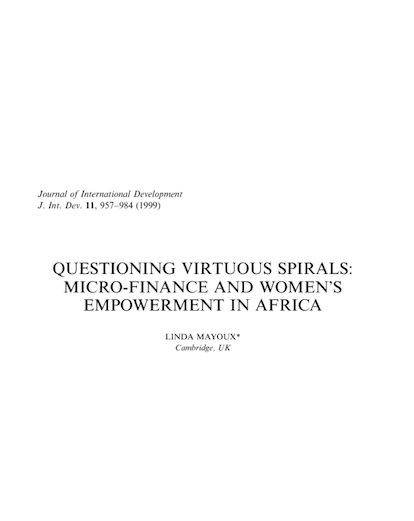 “Questioning Virtuous Spirals; micro-finance and women’s empowerment in Africa”
“Questioning Virtuous Spirals; micro-finance and women’s empowerment in Africa”
Mayoux, Linda. "Questioning Virtuous Spirals: Micro-finance and Women's Empowerment in Africa."Journal of International Development J. Int. Dev. 11.7 (1999): 957-84. Web.
This is the leading article presenting the analysis that empowerment cannot be considered an automatic outcome of participation with microcredit programs. Mayoux examines contrasting paradigms of women’s empowerment used by microfinance programs and presents the essential elements of an effective gender policy. The article also provides some comparison between the observed impacts in Asia and Africa.

“Rural Credit Programs and Women’s Empowerment in Bangladesh”
 “Rural Credit Programs and Women’s Empowerment in Bangladesh”
“Rural Credit Programs and Women’s Empowerment in Bangladesh”
Hashemi, Syed M., Sidney Ruth Schuler, and Ann P. Riley. "Rural Credit Programs and Women's Empowerment in Bangladesh." World Development 24.4 (1996): 635-53. Web.
This paper emphasizes the empowerment potential of microcredit programs for women in Bangladesh and argues that microfinance programs have the potential for empowerment even without a specific focus on gender and empowerment, preferring an approach more directed more specifically at income generation. Using the Grameen Bank and the Bangladesh Rural Advancement Committee (BRAC) as case studies, the authors analyze empowerment impacts through women’s ability to contribute to household income and control over their incomes and enterprises. The authors also analyze the impacts of these two organizations separately, and the reasons for their different impacts.

Films
An extremely important field of inquiry, and one which is gaining more attention in the field of microfinance research, these articles explore specific relationships between borrowers and lenders at the village level, and how the dynamics of these relationships play out on the ground. A study of these relationships and dynamics yields extremely interesting information about microcredit programs, and provides an important dimension to evaluations and analyses of microcredit programs.
THE CASHEW QUEEN OF PUTTLAM
The Micro Debt
Tom Heinemann 2010
For decades Microcredit has been hailed as the #1 solution to eradicate poverty. In December 2007, the Danish independent journalist and film maker, Tom Heinemann met with a woman by the name of Jahanara – living in a slum-like house two hours drive outside the Bangladeshi capital, Dhaka. Shortly before the meeting she had sold her house to pay her weekly instalments. For months, she had been intimidated, harassed and abused by the members of her loan group and by the loan officers from the various Micro Finance Institutions (MFI) – including Grameen Bank – who had given her the loans. Two years later the film crew went back to investigate if Jahanara had succeeded getting out of poverty. She wasn’t. “The Micro Debt” was first aired in a special Norwegian version on November 30. 2010 at NRK1 and caught attention in medias all over the world. In may 2011, Muhammad Yunus was sacked from Grameen Bank. Officially due to age, but according to Mr. Yunus it was the film that led to his fall. “The Micro Debt” has – so far – been aired in more than 20 countries and has received several international festival awards.
Bonsai People: The Vision of Muhammad Yunus
The film Bonsai People takes an emotional and captivating look at the stories, lives, and empowerment of several women who receive microcredit loans. This film aims to persuade the viewer of the strength that microcredit can have as a tool through the stories of these women. However, it is realistic in the sense that it also expresses the reality that “social business” solutions such as microcredit can help, but ultimately these women faces numerous other challenges outside of finances an turmoil.
Small Fortunes
An hour-long documentary about microcredit around the world, through the stories of eleven microcredit recipients. The documentary features interviews with leading microcredit experts, as well as numerous micro-entrepreneurs from the Philippines to New York. This is the most widely acclaimed film on microcredit, and has been endorsed by many of the world’s leading microcredit organizations. The film’s accompanying website, http://www.financedocumentaries.com/2011/10/small-fortunes-microcredit-and-future.html, provides an extended list of resources, profiles of microcredit recipients and industry leaders, information on microfinance organizations, as well as a preliminary but broad overview of the principal issues and debates within the microcredit industry, providing a thorough introduction to the field of microcredit and directions for further exploration.

Breaking Through
Produced by the Grameen Foundation USA, this 16 minute video is a short introduction to the concept of microfinance and the Grameen model. The video profiles the work of Grameen and its partners in South Asia, Africa, and Latin America, as well as many of the women who have benefited from its programs. Available to watch at the website above.
Key Concepts and Terms
A primary concern of microfinance evaluations and dialogues, the following articles deal with the issue of women’s empowerment, and the gender dynamics which contribute to it. While there is certainly no consensus among microfinance researchers about the empowerment potential of microfinance programs, a study of the microfinance and empowerment literature provides a crucial insight into some of the most important issues in the microfinance debate.
A) “Absurd Gap”
Coined by Marguerite Robinson in a book published by the World Bank, this term represents the gap between supply and demand in microfinance. It is meant to highlight the limited supply of financial services available for the immense percentage of the poor population which requires them. This term is primarily used by analysts who accept the Financial Systems Approach. See also: Financial Systems Approach.
B) BRAC
Formerly known as the Bangladesh Rural Advancement Committee, this Bangladesh-based NGO is the largest NGO in the world. The organization has recently spread its activities to Afghanistan, Sri Lanka, and Africa. It is primarily known for its work providing microfinance services.
C) Credit Plus
“Credit Plus” is the term often used for microcredit programs which provide other inputs in conjunction with loans which aim to enhance the efficacy of their programs. These programs usually involve some form of education, either business training or literacy, with the purpose of developing more successful and sustainable microenterprises. These programs are usually found in MFIs which use the Poverty Lending Approach to microcredit. See also: Poverty Lending Approach.
D) Dependency
Dependency is an issue which is widely discussed not only in the field of microfinance, but extensively in the field of International Development as whole. In microfinance, it primarily refers to two things: 1) the dependency of borrowers on microcredit loans and MFIs and 2) the dependency of MFIs on donor subsidies. See also: Sustainability.
E) Empowerment
One of the most central debates in the microfinance literature. There is little consensus among researchers about the potential for microcredit to empower women. It is primarily significant for the field of microfinance program evaluation, as many programs maintain claims of efficacy through research findings which uphold empowerment. However, as there is little consensus over the true meaning of “empowerment,” these findings often represent many different qualities, including education, health care, food security, decision making power, absence of domestic violence, and other things.
F) Extreme Poor
Alternately called the “poorest of the poor” and the “hardcore poor.” These terms are used to define the group of people who live in “absolute poverty,” defined by CGAP as a maximum consumption of 1740 calories a day. In Bangladesh, roughly half of the people living under the poverty line are included in this group. Members of the hardcore poor often suffer from chronic food shortages, illiteracy and income insecurity. There exists a major debate within the microfinance field over the potential for microfinance to benefit this poorest group, as well as the benefit to microfinancial institutions in targeting this group.
G) Financial Systems Approach
This is one approach to microfinance delivery which emphasizes financial services to the poor through a traditional commercial banking model and the development of independently sustainable financial institutions. This method views microfinancial services as a commercial market providing services which clients want at a cost to the client that covers the costs to the institution of delivery. The key element of this model within the context of the broader field of microfinance is that the ultimate objective of the Financial Systems Approach is the financial viability of the lending institution itself, as opposed to the objective being poverty alleviation per se. Rather, advocates of the Financial Systems approach argue that by prioritizing institutional viability, these programs will be able to have a broader poverty alleviation impact. See also: Poverty Lending Approach.
H) Grameen Bank and Muhammad Yunus
Muhammad Yunus is the founder of the Grameen Bank, one of the world’s leading microcredit institutions. Together, Yunus and Grameen Bank won the 2006 Nobel Peace Prize for their pioneering work in the field of microfinance. Founded in Bangladesh, their activities have since spread to many other countries around the world, even establishing a branch to give loans to poor people in the United States. See also: Solidarity Groups.
I) Horizontal Social Capital
Social capital is a theoretical tool which is often used to explain the success of microcredit programs. The World Bank defines social capital as “the norms and social relations embedded in the social structures of societies that enable people to coordinate action to achieve desired goals.” There is a growing trend among microcredit theorists to differentiate between Horizontal Social Capital and Vertical Social Capital. The former is used to describe relationships between people in roughly equivalent social positions. In microcredit research, these relationships are normally said to be found between members of Solidarity Groups. See also: Vertical Social Capital and Solidarity Groups.
J) Informal Economy
The sector of economic activity which is not regulated by the government or the mainstream financial sector. Microfinance proponents argue that the availability of microcredit is crucial to those in the informal economy and to bringing those who work in the informal economy gradually into the formal economy.
K) Kiva.org
Kiva.org is an internet lending site which connects individuals to prospective microcredit borrowers. Lenders can log on to the site to read profiles and business plans of entrepreneurs from around the world and choose who they would like to lend to. Kiva works through a number of partner organizations worldwide which work directly with entrepreneurs to give credit and collect repayments. While loans through Kiva provide 0% interest to lenders, microcredit partner organizations may charge interest to their borrowers.
L) Microcredit
The practice of giving loans to poor people who are not otherwise considered creditworthy by the mainstream financial system. See also: Microfinance
M) Microcredit Summit Campaign
This education and advocacy campaign is the result of the Microcredit Summit, held in 1997 in Washington DC, which was attended by more than 2,900 delegates from 137 countries. The objective of the campaign is to help microcredit reach 175 million of the world’s poorest families by 2015.
N) Microenterprise
A small business started with a loan or other financial services from an MFI. See also: MFI.
O) Microfinance
Microfinance is an umbrella term for an assortment of financial services provided to the poor, including microcredit, savings, insurance, and remittance services. See also: MFI, Microcredit.
P) Microfinance Institution (MFI)
The name given to any organization, either for-profit or non-profit that provides financial services to the poor.
Q) Poverty Lending Approach
This is one approach to microcredit delivery which advocates lending to the poorest. It is often contrasted to the Financial Systems Approach. Many Poverty Lending advocates have written that microcredit is a human right, and that all people are entitled to access to credit. However, the ultimate objective of programs which use the Poverty Lending approach is empowerment and poverty alleviation, as opposed to institutional sustainability. Practitioners of this approach attempt to identify the causes of poverty and address them with a variety of interventions, including microfinancial services. Opponents of this approach argue that it is not an effective strategy of microfinance delivery because it will not be able to achieve the scope necessary for broad-scale poverty alleviation. See also: Financial Systems Approach.
R) Rotating Savings and Credit Associations (ROSCAs)
ROSCAs are informal savings and credit groups which are often found at the village level organized locally without NGOs. They are similar to the more formal financial service of a “Revolving Loan Fund.” In these groups, each member contributes the same amount of money at a regular interval and each time one member is given the whole amount to invest however they would like. The ROSCA ends or begins again when every member has taken the larger sum once.
S) Social Collateral
Many practitioners have stated that the purpose of microcredit is to provide loans to people who do not have collateral with which to guarantee repayment. However, many microcredit programs use a form of non-tangible collateral known as Social Collateral to guarantee repayment. Through this method, loans are guaranteed by neighbors and other members of Solidarity Groups, through an institutionalized peer-pressure technique. In this way, the consequences of non-repayment of loans are social consequences as opposed to financial consequences, which are widely regarded as equally, if not more, severe than financial consequences for the poor. See also: Solidarity Group.
T) Solidarity Groups
Many MFIs, including Bangladesh’s Grameen Bank, use Solidarity Groups as a method of loan delivery and repayment. Groups are composed of usually around 10-20 borrowers (usually women) who do anything from monitoring each other’s loan repayment, to encouraging each other to repay loans, to making decisions about who is creditworthy, to providing a sense of solidarity and collective action for the members of the group. This mechanism is the subject of an increasingly large debate by microfinance researchers over microfinance best practices. The microfinance method which uses Solidarity Groups is often referred to as “Group Banking.” See also: Social Collateral and Horizontal Social Capital.
U) Sustainability
Sustainability is a term which is widely used and extensively debated in the microfinance field. It can refer to either of two things: 1) The sustainability of the microfinance institution which provides financial services or 2) The sustainability of the small businesses which have been fostered through microfinance. The issue of sustainability is of central concern to microfinance researchers, analysts, and practitioners, as many have suggested that the different forms of sustainability may be mutually exclusive. See also: Dependency.
V) Vertical Social Capital
In microcredit research, this term is primarily used to describe the relationships between borrowers and lenders, specifically, between individual borrowers and the NGO field workers who provide them with loans. This term emphasizes the hierarchical nature of this relationship, of which there are said to be both positive and negative aspects. Many researchers have emphasized the importance of Vertical Social Capital to establishing trust between lender and borrower. While it is commonly stressed that the relationships between members of Solidarity Groups ensure the repayment of microcredit loans, there is a growing body of research which contends that it is Vertical Social Capital instead that ensures repayment. See also: Horizontal Social Capital.
W) Village Moneylender
Loans from MFIs are often taken as an alternative to loans from village moneylenders (often called loan sharks) who often charge exorbitantly high interest rates and engage in violent intimidation tactics to force repayment of loans.
X) “Virtuous Spirals”
This term was coined by microcredit researcher Linda Mayoux, though it is widely used in the microcredit literature. It represents the assumption made by many microcredit impact assessments that various forms of empowerment result from each other, creating a spiral of empowerment out of single or limited inputs, specifically, microcredit. In this context, financial empowerment through microfinance might lead to social and political empowerment, represented by, for example, decreased levels of domestic violence and increased education levels for children. There is a great deal of debate about whether or not these virtuous spirals actually exist.